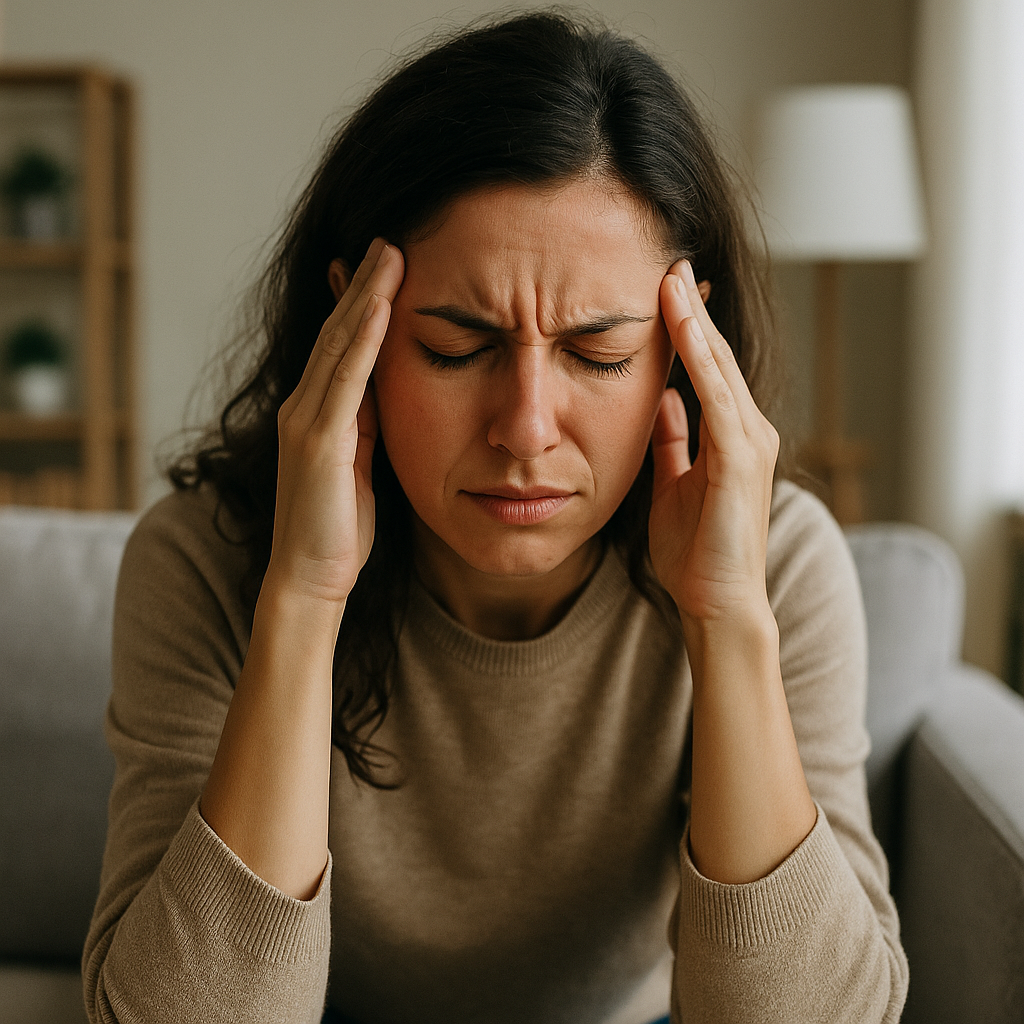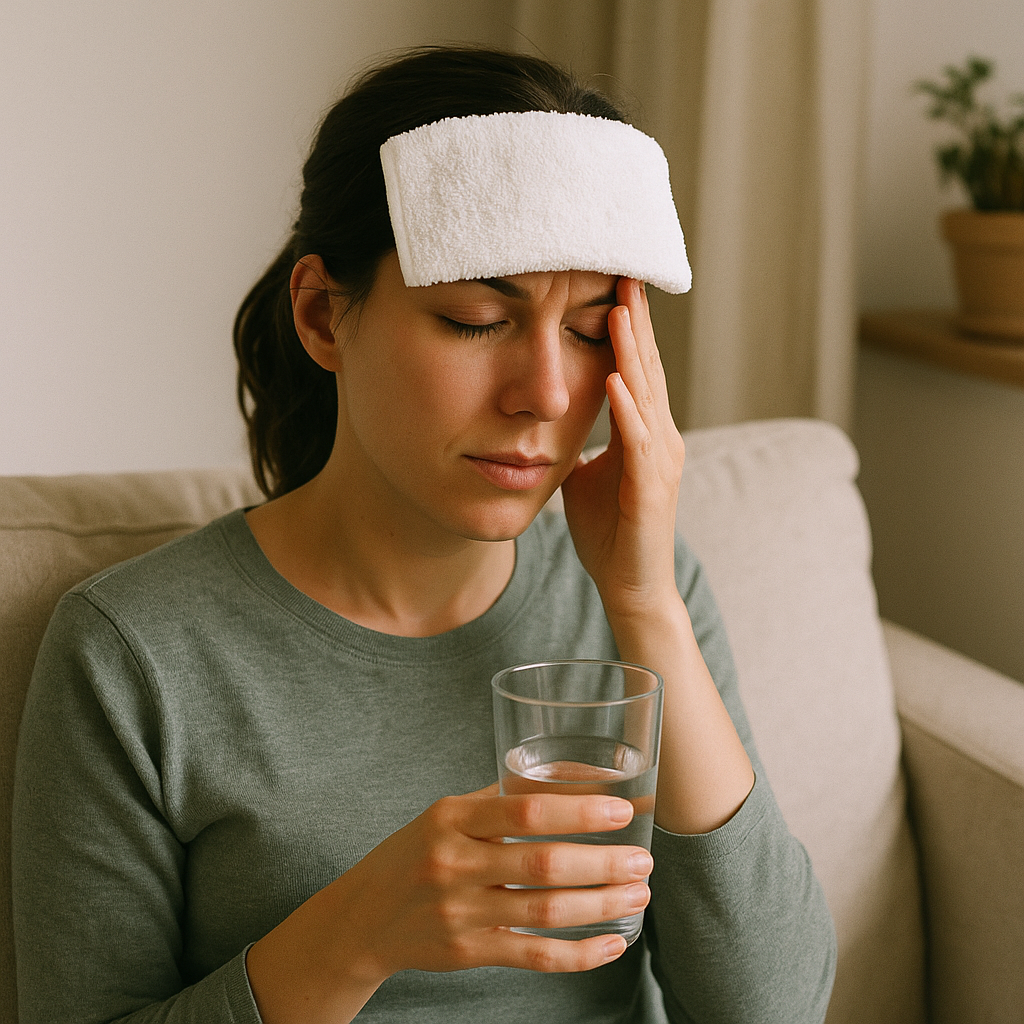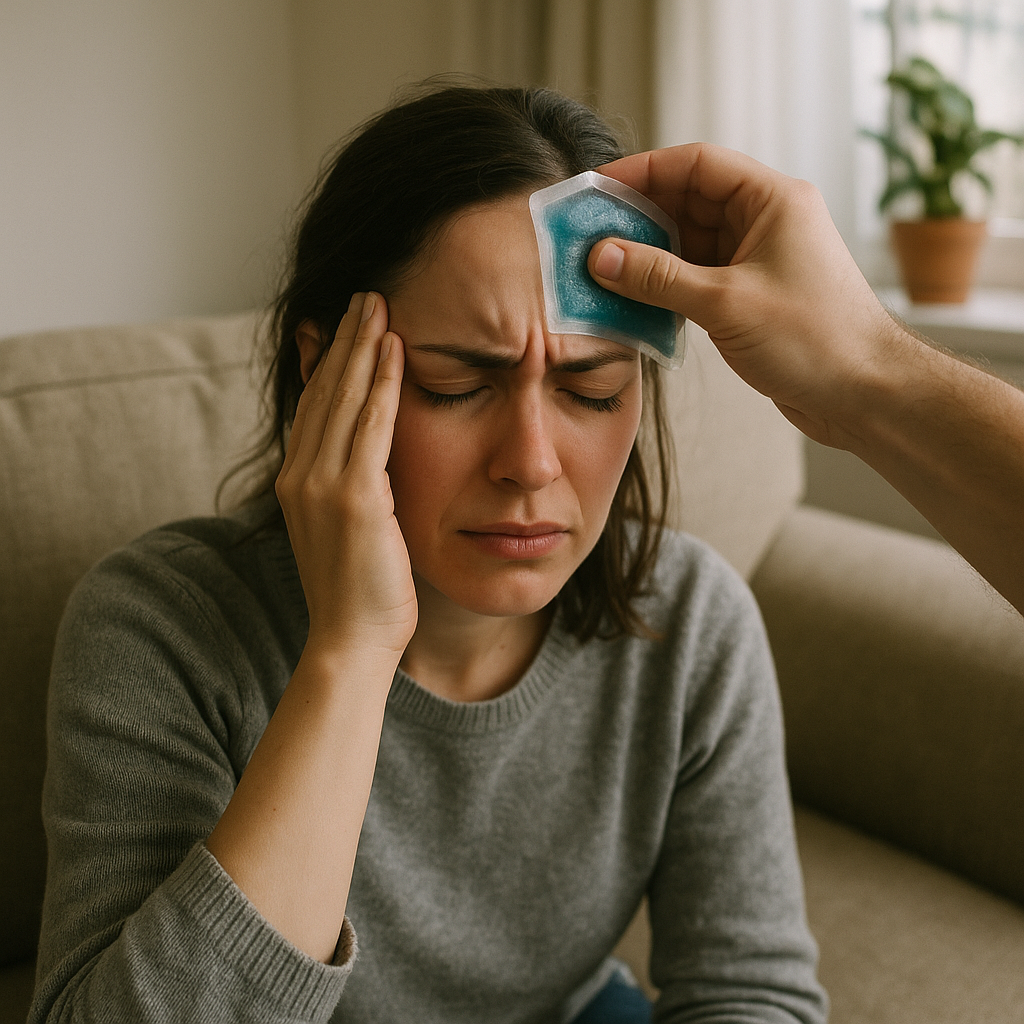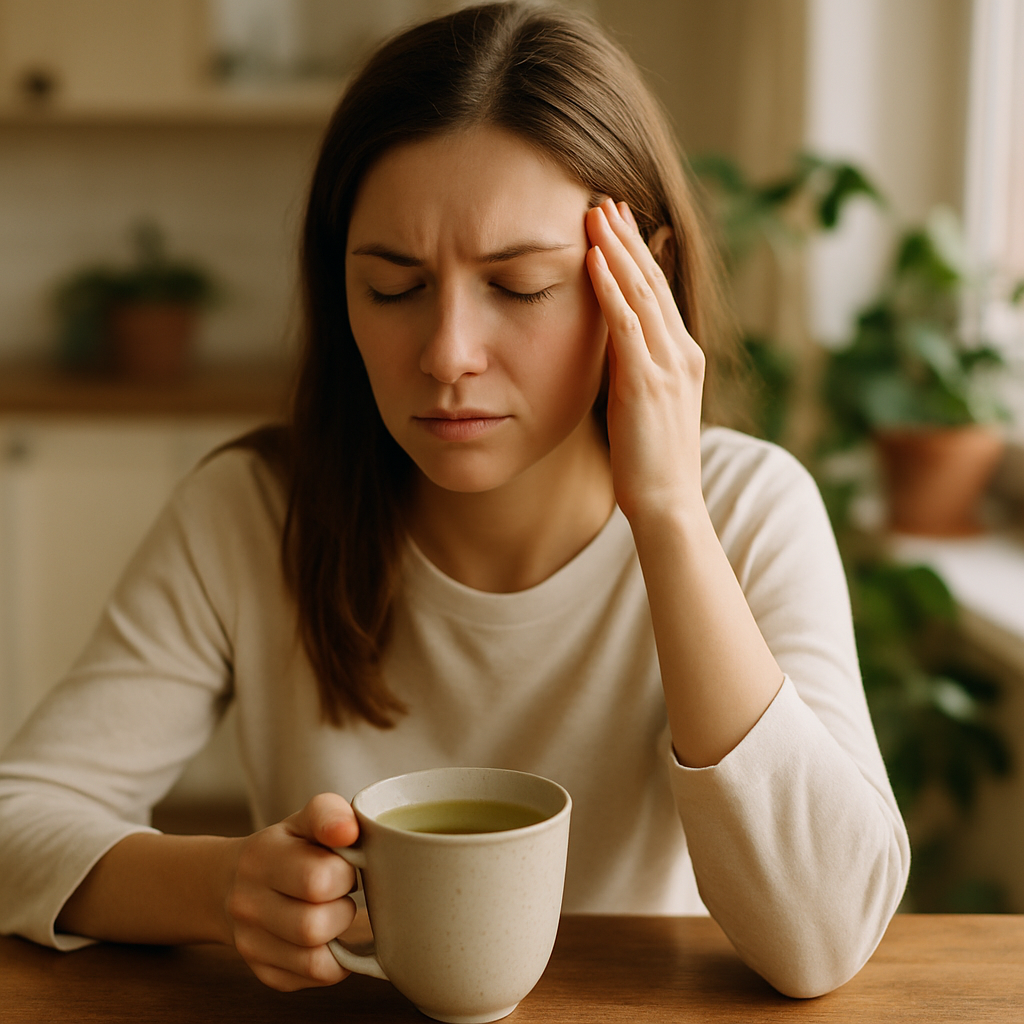Shop Now in Our Store
How to Get Rid of a Migraine: Fast and Natural Relief

If you’ve ever wondered how to get rid of a migraine, especially when it creeps in at the worst possible moment, you're definitely not alone. Migraines are more than just “bad headaches”—they can derail your day, your plans, even your week. And let’s be real: when you’re stuck searching how to get rid of a migraine fast or how to cure migraine permanently, you're probably desperate for something that actually works—not just another painkiller that dulls it for a while.
So whether you're looking for migraine relief at home, curious about Ayurvedic alternatives, or just tired of cycling through meds and hoping for the best, this guide covers it all. With real, practical tips and some science-backed (and slightly crunchy) remedies, you'll be armed with what you need to finally breathe a little easier.
What Is a Migraine and Why It Happens
Before diving into how to treat a migraine, it's important to understand what’s actually going on inside your body.
Migraine vs Headache: Key Differences
A regular headache? Annoying. A migraine? Whole different beast. Migraines typically come with intense throbbing pain on one side of the head, often accompanied by nausea, visual disturbances (hello, light sensitivity), and sometimes even vomiting. Unlike a tension headache, a migraine can last anywhere from a few hours to several days.
Think of it like this: a headache says “take a break.” A migraine screams “shut everything down now.”
Triggers from an Ayurvedic and Medical Viewpoint
Modern medicine points to genetics, hormonal fluctuations, stress, and diet as common migraine triggers. Certain foods—like chocolate, aged cheese, wine (sigh)—can all play a role.
From an Ayurvedic perspective, migraines are often a result of imbalanced Pitta (fire) or Vata (air) doshas. Excess heat in the body, poor digestion, or accumulated stress can trigger what they call "Shirah Shoola" or head pain.

Migraine Symptoms and When to Take Action
Knowing when you're on the brink of a migraine is half the battle.
Common Physical and Emotional Signs
Some people get “auras”—flashing lights, blind spots, or weird visual patterns. Others might feel fatigued, irritable, or just… off. Emotionally, a feeling of doom or anxiety is surprisingly common (and under-discussed).
Watch out for:
-
Neck stiffness
-
Cravings (yes, craving sweets or salty snacks can be a pre-signal)
-
Constipation
-
Frequent yawning
-
Mood swings
These aren’t just weird coincidences—they can be early warning signs that your body is entering migraine mode.
When a Migraine That Won’t Go Away Becomes a Warning
If you're searching how to get rid of a migraine that won’t go away, take it seriously. A migraine lasting more than 72 hours could be a condition called status migrainosus—basically, a migraine that overstays its welcome and needs medical attention.
Don't wait it out if:
-
The pain is different than your usual migraines
-
You have trouble speaking or lose vision
-
The headache started suddenly and severely
Sometimes what feels like a "bad migraine" is actually something more serious. Better safe than sorry, honestly.

How to Get Rid of a Migraine Fast and Naturally
When a migraine hits, you don’t want theory—you want relief, and you want it fast. Whether you're at home, at work, or curled up in the dark wondering how to get rid of a migraine quickly, this part covers practical steps you can take right now. No fluff, no empty promises.
Home Remedies and Simple Practices for Immediate Relief
Let’s start with the basics—stuff you can do without needing a prescription or a trip to the store:
-
Cold compress: Place a cold cloth or gel pack on your forehead or the back of your neck. It might not cure the migraine, but it can help stop it from escalating.
-
Hydrate: Dehydration is a sneaky trigger. Drink a full glass of water (maybe even two) and avoid caffeine unless you know it helps your particular type of migraine.
-
Caffeine (in small amounts): Oddly enough, small amounts of caffeine can actually enhance the effect of migraine medications and even stop a migraine early on—but it’s a double-edged sword. Too much, and you could make things worse.
-
Dim the lights: Bright light and loud sounds can amplify the pain. If you can, retreat to a dark, quiet room.
-
Peppermint oil: Apply diluted peppermint essential oil to your temples. Some people swear by it for migraine relief at home, and hey, worst case, you smell minty fresh.
-
Gentle stretching or yoga: Simple neck rolls, shoulder shrugs, or lying in legs-up-the-wall pose can reduce tension. (No need to overthink it—just move your body a bit.)
None of these are magic fixes, but combining a few of them often works better than you'd expect.
How to Stop a Migraine Without Medication
For those looking to avoid pharmaceuticals, there’s a growing interest in how to help a migraine naturally. And while some cases absolutely need medication, others respond well to non-drug techniques:
-
Acupressure: Applying pressure to specific points like the webbing between your thumb and index finger (LI4 point) can help reduce migraine pain.
-
Breathing exercises: Deep belly breathing or box breathing helps calm the nervous system, especially during the aura or early pain phase.
-
Magnesium supplements: Low magnesium levels are linked with migraines. A daily dose of magnesium glycinate or citrate might help with prevention and possibly reduce severity.
-
Sleep: Not always easy mid-migraine, but sometimes a short nap or simply lying still can reset the body.
Honestly, when you're researching how to get rid of a migraine naturally, it's usually about trial and error. What works for one person might not help another. So it's okay if something doesn't work for you—try a different combo next time.

Ayurvedic Treatment for Migraine Headache
Ayurveda, the ancient Indian system of medicine, views migraines as deeper imbalances in the body’s doshas, particularly Pitta and Vata.
Understanding Migraine Through the Lens of Pitta and Vata
-
Pitta migraines: Usually sharp, burning, or throbbing pain often triggered by heat, anger, or spicy food. They tend to affect the temples and eyes.
-
Vata migraines: Feel more like dull or pulsating pain, with dryness, anxiety, and restlessness. Triggered by cold, irregular routines, or stress.
Determining your dosha imbalance is the first step in Ayurvedic treatment. You can consult an Ayurvedic practitioner or use online dosha quizzes (though, fair warning, they’re not always accurate).
Herbal Remedies and Oils (e.g., Brahmi, Ashwagandha, Shirodhara)
Some classic Ayurvedic remedies include:
-
Brahmi: Known to calm the mind and support brain health.
-
Ashwagandha: A powerful adaptogen that helps with stress-related migraines.
-
Shirodhara: A relaxing treatment where warm oil is poured over the forehead. Sounds weird, but it can be shockingly effective.
Diet and Lifestyle Adjustments for Chronic Relief
Ayurveda recommends cooling foods for Pitta and grounding routines for Vata:
-
Avoid fried, fermented, and overly spicy foods
-
Eat at regular times (no skipping meals)
-
Build a consistent daily routine, including wind-down time at night
These changes aren’t instant cures, but they are powerful over time. Think of them as migraine prevention, not just treatment.

Migraine Prevention and Long-Term Management
As anyone dealing with migraines knows, it’s not just about stopping the pain—it’s about making sure it doesn’t come back. Prevention is key. Whether through migraine prevention medication or natural lifestyle shifts, building long-term habits can make a world of difference. And yes, it might sound boring, but consistency often wins.
Migraine Prevention Medication vs Natural Approaches
Let’s be real—sometimes, meds are necessary. Especially for people whose migraines are frequent, severe, or completely unpredictable.
Common migraine prevention medications include:
-
Beta-blockers (like propranolol)
-
Anti-seizure drugs (like topiramate)
-
Antidepressants
-
CGRP inhibitors (a newer class targeting migraine-specific pathways)
But the downside? Side effects, trial-and-error dosages, and the risk of rebound headaches if you're relying on quick-fix pills too often.
That’s why a lot of folks are now mixing modern with traditional—using meds when needed, but also exploring how to get rid of a migraine naturally or minimize how often they occur in the first place.
Daily Routines and Stress Management
One thing nearly every migraine sufferer learns eventually: the body loves routine. Irregular meals, sleep deprivation, and screen overload are practically an invitation for a migraine to show up unannounced.
Here’s what helps:
-
Wake and sleep at the same time daily—even weekends.
-
Regular meals, ideally warm and easy to digest.
-
Daily movement: Walking, yoga, or light stretching. Doesn’t need to be intense.
-
Reduce screen time when possible, especially in the evenings.
-
Manage stress: Not always easy, but techniques like journaling, meditation, therapy, or just taking short "do nothing" breaks throughout the day can help.
Even if you don’t think of yourself as “stressed,” the nervous system often knows better. And migraines are great at picking up what your conscious brain might ignore.
Conclusion
Figuring out how to get rid of a migraine—especially fast, naturally, and for the long haul—isn’t a one-size-fits-all journey. What works for you might not work for your friend or co-worker or random person in a migraine forum. But the combination of home remedies, Ayurvedic practices, and modern migraine headache treatment can give you a powerful toolkit.
So next time you feel that familiar ache behind your eyes or that tension in your neck, don’t panic. Use what you’ve learned. Try a few techniques. Track your triggers. Build that daily routine. You’re not at the mercy of your migraines—you’re learning how to manage them.
And who knows? Maybe someday, you’ll be the person someone turns to when they ask, "Hey… do you know how to get rid of a migraine that just won't quit?"
FAQs
Can migraines be cured permanently through natural methods?
Unfortunately, there’s no guaranteed permanent "cure"—but many people reduce their migraine frequency dramatically through natural methods. Diet, lifestyle, and stress reduction can lead to long-term relief. For some, it feels pretty close to a cure.
Which foods should I avoid during migraine episodes?
Common culprits include aged cheese, chocolate, caffeine, red wine, processed meats, and anything with MSG. But every person’s triggers are different, so it’s worth keeping a food journal to spot patterns.
What are the best techniques for migraine prevention?
Daily routines, hydration, sleep hygiene, managing screen time, consistent meals, light exercise, and stress reduction techniques (like meditation or therapy) are all effective. Some people also benefit from magnesium or riboflavin supplements.
This article is checked by the current qualified Dr Sujal Patil and can be considered a reliable source of information for users of the site.
Got any more questions?
Ask Ayurvedic doctor a question and get a consultation online on the problem of your concern in a free or paid mode.
More than 2,000 experienced doctors work and wait for your questions on our site and help users to solve their health problems every day.

